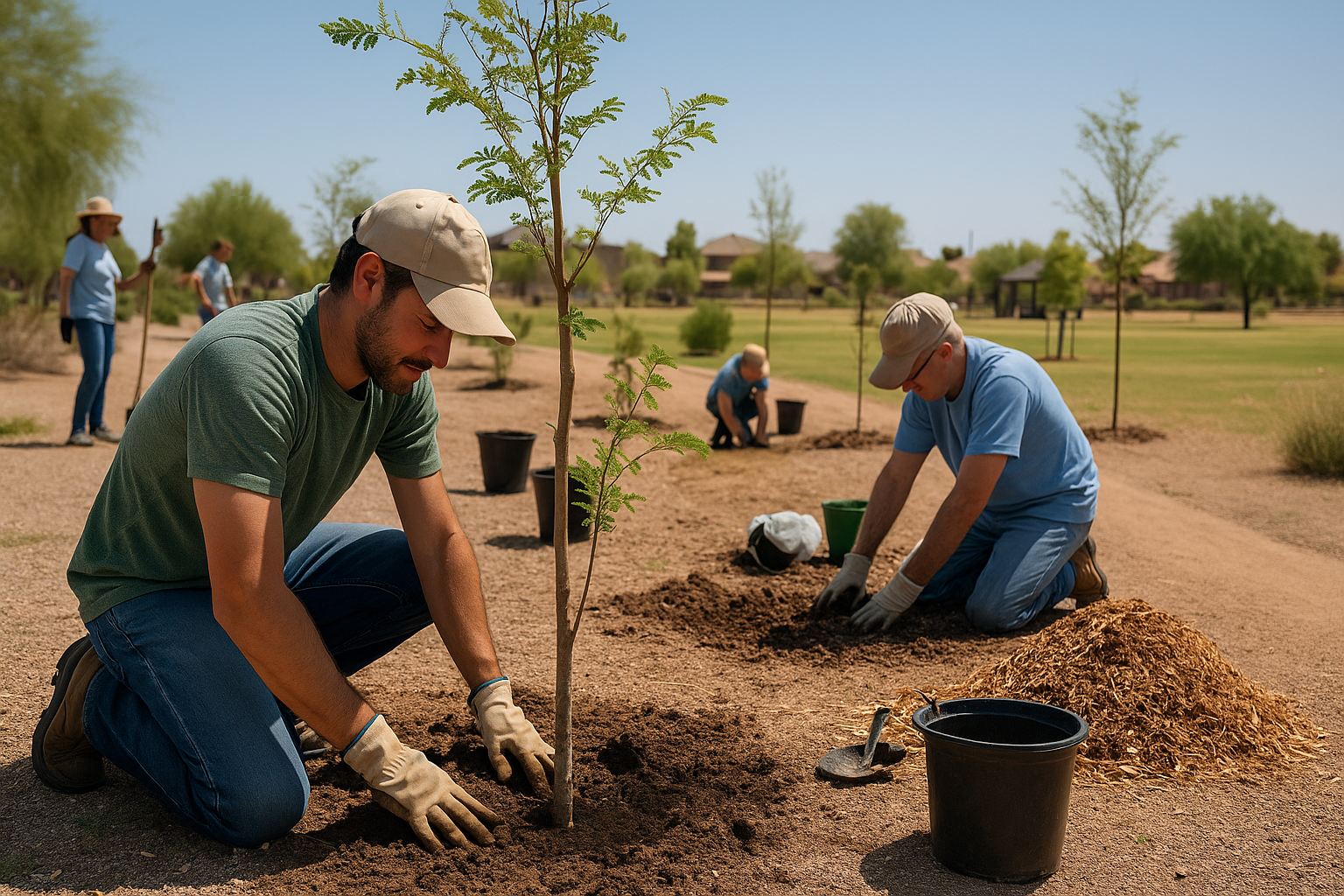Avondale Residents Join Hands to Plant 20 New Trees in Community Drive
Forty‑eight volunteers came together in Las Ligas Park on June 15 to plant 20 new shade trees and clean up local neighborhoods, marking a community effort to enhance both green space and neighborhood pride in Avondale.
Local Volunteers Reforest Urban Park
On June 15, 48 participants—including residents, neighborhood associations, and city staff—planted 20 native shade trees along walking trails at Las Ligas Park in Avondale facebook.com+7avondaleaz.gov+7instagram.com+7. The project transformed bare areas throughout the park, offering future respite under tree canopies in one of west Phoenix’s growing suburbs.
Organizers partnered with the Arizona Community Tree Council to ensure appropriate species selection—such as Desert Museum Palo Verde and Chinese Elm—that thrive in local soil and climate. The planting included instruction on proper soil preparation, staking, and mulch application to promote long-term health.
Neighborhood Cleanup Boosts Civic Pride
In addition to planting trees, volunteers cleaned up graffiti and litter in adjacent Cashion and Las Ligas neighborhoods, assisting over 50 property owners with minor curb appeal improvements like weeding and debris removal avondaleaz.gov. Residents expressed gratitude for the collaborative effort, noting the importance of visible public investment in local parks and streetscapes.
City of Avondale officials praised the effort as part of their “Beautify Avondale” initiative, aimed at strengthening community identity while enhancing public health and aesthetics.
Environmental and Health Benefits
Urban trees deliver measurable benefits. The planted trees are projected to reduce summertime temperatures by 1–3°F at ground level, improving comfort for park visitors and reducing energy use in nearby homes. Mature trees can sequester up to 48 pounds of CO₂ per year and intercept 700 gallons of stormwater annually per tree, according to U.S. Forest Service research.
Planting along trails also encourages walking, outdoor exercise, and social connection—priorities emphasized in a 2024 Maricopa County health report instagram.com+1avondaleaz.gov+1avondaleaz.gov.
Citywide Push for Urban Greening
Avondale’s event reflects a broader Maricopa County Smartscape effort to increase urban tree canopy and promote low-water landscaping facebook.com+2aztrees.org+2aztrees.org+2. The county’s partnership with Trees Matter supports workshops, rebates, and volunteer events aimed at planting over 1,000 shade trees annually across the Phoenix metro region.
Upcoming events include:
- Smartscape Plant Materials Workshop – June 17 in Phoenix instagram.com+3srpnet.com+3treesmatter.org+3visitphoenix.com+4aztrees.org+4aztrees.org+4
- Community Shade Tree Give‑Away – June 28, hosted by SRP, Phoenix area srpnet.com
These efforts align with regional conservation goals and hotter average summers.
Community Engagement and Education
Volunteers received planting training and information on tree care, with local arborists offering tips on pruning, watering, and pest prevention. The city plans follow‑up events in the fall for pruning and community tree walks to encourage stewardship.
Youth from nearby schools also took part, reinforcing understanding of local ecosystems and civic service. Organizers told ABC 15 that hands‑on experiences foster lifelong habits of environmental responsibility abc15.com.
What’s Next for Avondale’s Green Spaces
City staff and the Arizona Community Tree Council plan to monitor the new trees and schedule mulching and irrigation checks over the next two years. The goal is for Las Ligas Park to become a model for replication in other Avondale parks and public spaces.
Residents interested in volunteering or sponsoring future greening efforts can contact Avondale Parks & Recreation or visit the city’s “Beautify Avondale” webpage for involvement details.
Why It Matters
Avondale’s tree‑planting day demonstrates how small efforts—planting shade trees, removing graffiti, and improving public areas—can contribute to healthier, more resilient neighborhoods. In the heat‑stressed Phoenix metro area, expanding green infrastructure is a critical community investment.
